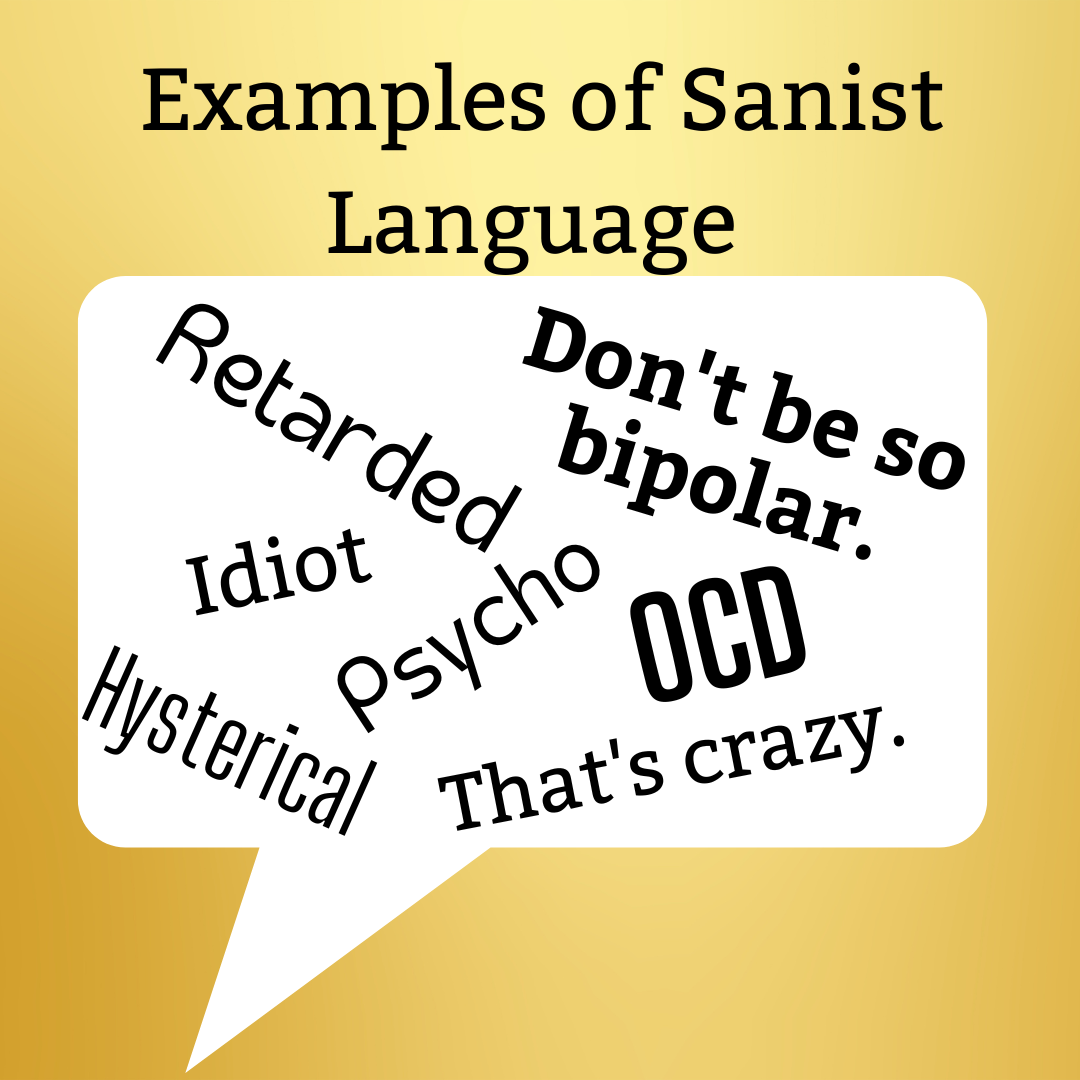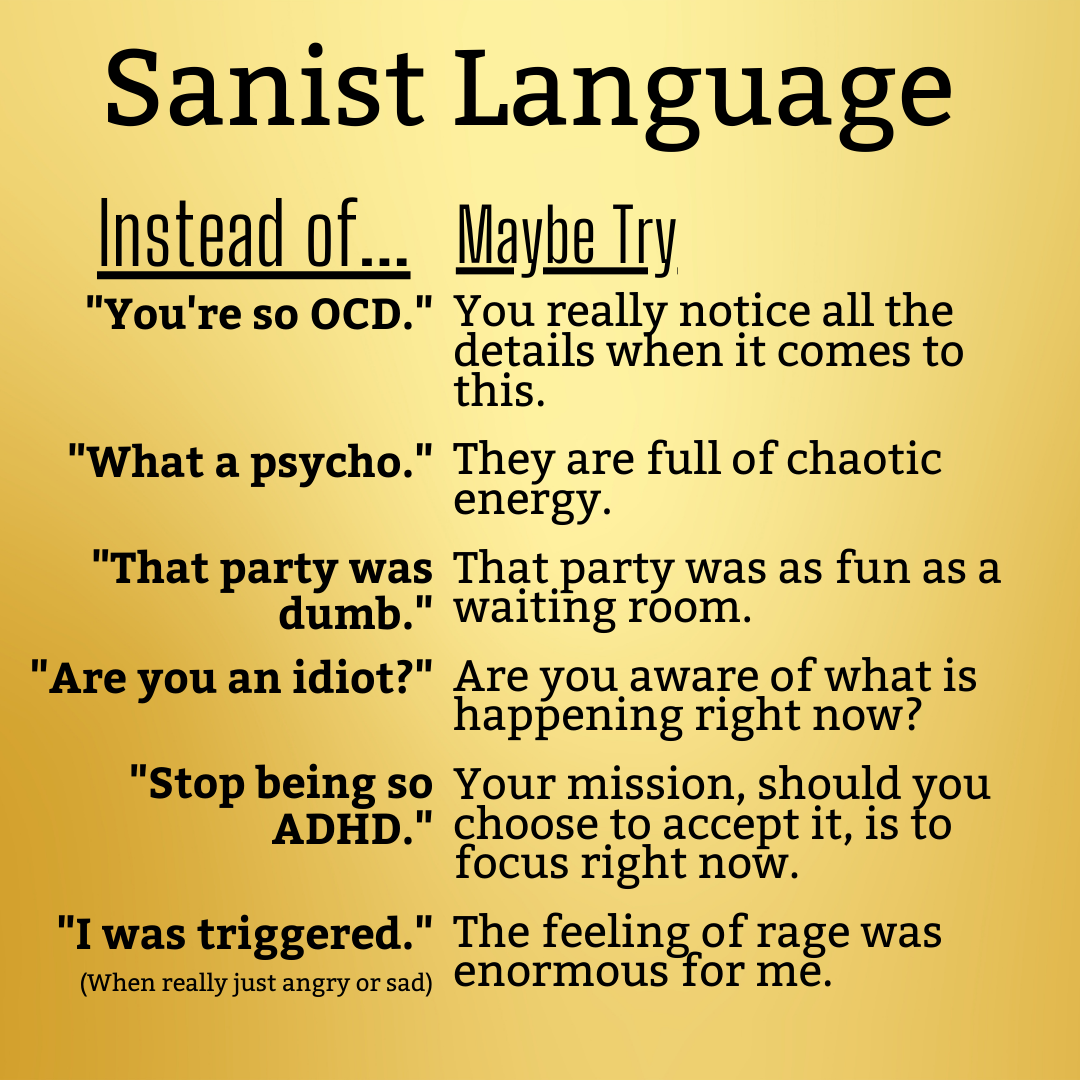Sticks and stones may break bones. But sanist words? They can actually be really harmful.
In a previous post about ableism, we discussed how words we normalize can be harmful. In a similar vein, today we want to discuss sanism (or saneism) and mentalism, as well as the importance of choosing our words with intent.
Many of the words people use as insults today actually stem from ones that describe mental illnesses. You never know who is listening and what they’re going through at the moment. When they hear you describe their condition disparagingly, they may be even less likely to seek help.
Is sanism different than mentalism?
It isn’t. Sanism and mentalism have both been used by mental health advocates for over 40 years and both refer to ideas, terms, and policies that are prejudiced toward people who have (or are perceived to have) a mental disorder or cognitive impairment. The term “sanism” was coined in the 1960s by Morton Birnbaum, a physician, lawyer, and mental health advocate. Judi Chamberlain coined the term “mentalism” in a chapter of the book Women Look at Psychiatry in 1975. For the sake of clarity, we will use the term sanist for the rest of the article.

You may hear people joke about labels to exaggerate their personality traits such as being Bipolar when they can’t make up their mind, ADD when they can’t focus, or OCD when they pay attention to detail or like keeping things organized.
These words and phrases that our followers shared on our social media post can also be swapped with something more specific, without being mean and bringing others down in the process:
- Simple-minded
- Idiot
- Stupid
- Dumb
- Psycho
- Spaz
- Insane
One follower noticed that the majority of the sanist words they hear are calling someone or something stupid, dumb, or crazy. “I even caught myself calling my dog’s medication packaging dumb when I could have called it frustrating, poorly planned, or hard to open.” Because of these posts, this follower, and even the team, are now realizing more often when they’re doing it and can stop and think of alternates.
That wasn’t my intent!
Sometimes, our intentions don’t match our impact, and that is often the case with sanist language or ideas. We can acknowledge the unique things about people around us without comparing them to a mental disorder and further stigmatizing mental illness.
What’s the next step? Our tips from last month apply here as well:
- Educate yourself! Follow up with the articles at the end of this post. Take advantage of Google or your social media community.
- Listen! When someone tells you a word is harmful or offensive- believe them. If it is not a community you belong to, it’s not your place to determine what is offensive to that community. (Also, one member of that community can’t give the “okay” for the whole community)
- Practice! Pick a few alternatives for the inappropriate language and practice using them on your own. Correct yourself immediately and without over-apologizing. Keep trying until you no longer use the phrase.
- Call in! Let your friends know what you know. Encourage an environment of inclusivity around you. Create a safe space for people to increase their own awareness and change their language.
Removing stigmatizing language from our vocabulary can be difficult, but even being aware of the words we use can be a good first step. You might not get everything right at first, but simply making this effort could make all the difference.

– Article contribution and graphics by Victoria Velour
Stay tuned for next month’s post, where we share our community’s answers to our question “What is the best virtual class you’ve ever taken?”.

